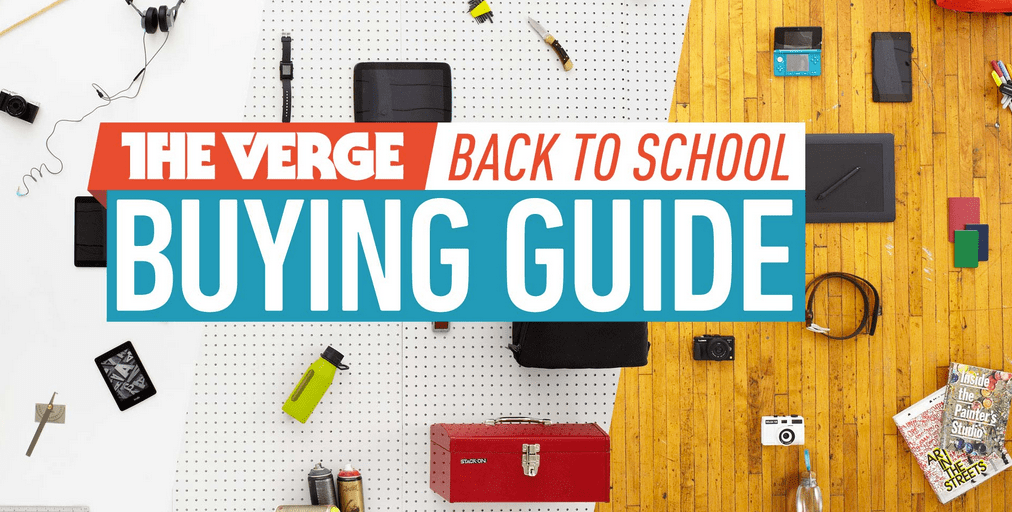
Back-to-school product guides are a rite of passage for magazines. But on the Web, they’ve turned into lists, often just linking back to products on Amazon. Today, Vox Media’s tech site The Verge rolled out a new spin on the old standby.
The Verge Back to School Guide is the publisher’s attempt to bring a magazine-like experience to the Web. Built in-house with responsive design — it looks the same across desktop, mobile and tablet — the guide is chock full of bold images that highlight products. It was an opportunity for the media company to flex its product muscles.
“These days when people read stories on the Web, people come to a site expecting to encounter distractions to getting what they wanted,” said Michael Shane, assistant to the editor-in-chief. “This is our way of solving that challenge.”
For example, the navigation is unobtrusive; it’s infinite scroll. It carries a single ad from sponsor HP, which appears as you scroll down through the characters. The ad isn’t a standard IAB and was custom-built by Vox.
“One thing that magazines do really well is advertising tends to not be as annoying as they are on the Web, or distracting,” said Dave Epstein, product manager for The Verge. “The advertising [for the guide] is integrated with design so that it flows well.”
The Verge created three characters, each representing three archetypes of Verge readers: the engineer, the designer and the artist. Products surround each character. Those with the colored dots (blue for designer, red for engineer) are the ones recommended. Hover over the dot and you get the price of the product, as well as an outbound link to where you can purchase. If The Verge has previously written a review of the product, a link will take you to it. For example, there’s a Verge review for the Nexus 10 under the “media” recommendations for the engineer.
The project is a showcase of the modern publisher at work. Vox has trumpeted its tech bent, starting with its homegrown content-management system. Projects like the back-to-school guide show how publishers need a product mindset more often associated with tech companies.
The project took six weeks to build. This is the start of the direction the company wants to take for custom features and pieces. Because all Vox sites, SB Nation, Polygon and The Verge, operate on the company’s custom-built CMS this can be adapted throughout the company. The Verge did all the photography, eschewing stock product shots.
“This was done with same level as you’d find in a high-end beautiful print magazine,” Epstein said. “To some extent, when you want to make a guide — that’s more than just a list — that’s the kind of investment required.”
More in Media

Podcast companies turn to live events to capture growing advertiser spend
The surge in the number of live podcast events in 2025 reflects a broader shift: advertisers are betting bigger on podcasts — not just as an audio channel but as a full-fledged creator economy play.

Media Briefing: ‘Cloudflare is locking the door’: Publishers celebrate victory against AI bot crawlers
After years of miserably watching their content get ransacked for free by millions of unidentified AI bot crawlers, publishers were finally thrown a viable lifeline.

How Vogue could navigate potential industry headwinds as Anna Wintour — who agency execs say made ad dollars flow — brings on new edit lead
Anna Wintour’s successor at Vogue will have to overcome the myriad of challenges facing fashion media and the digital publishing ecosystem.







